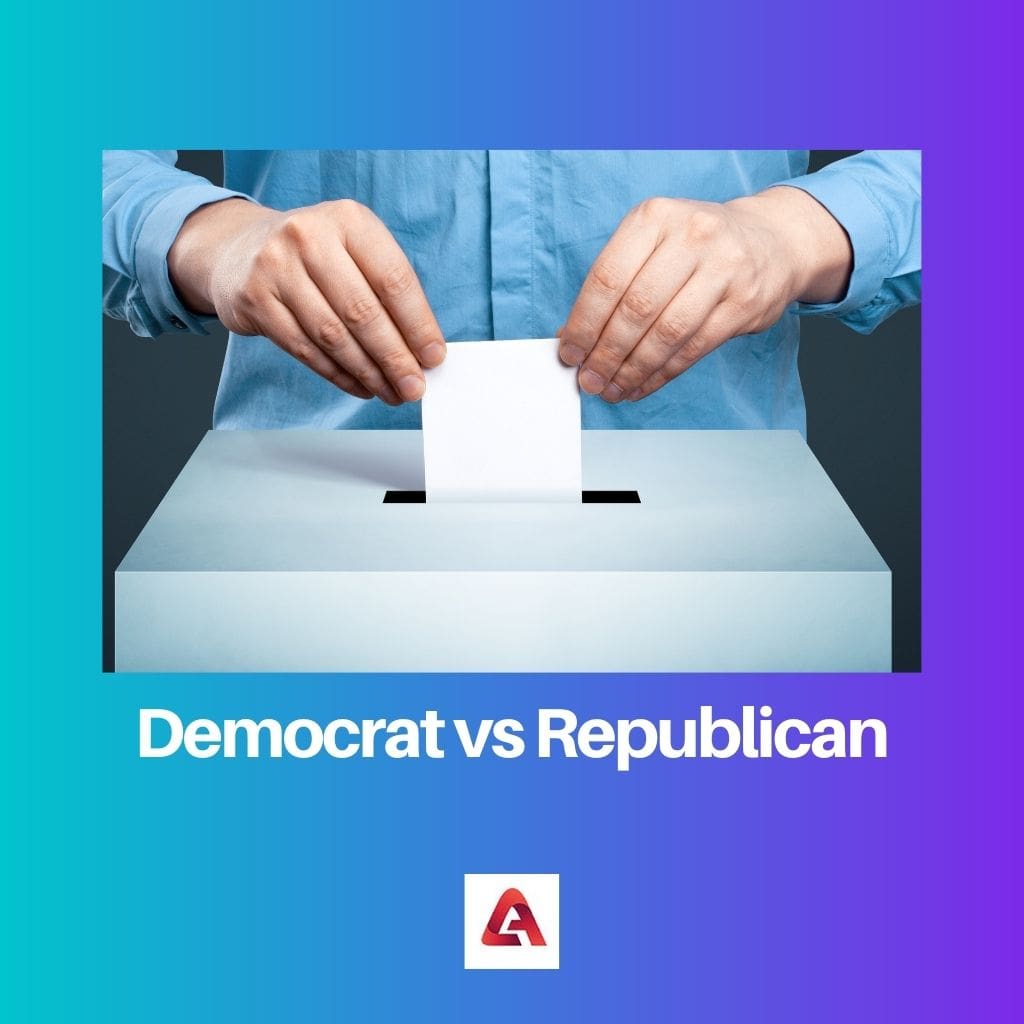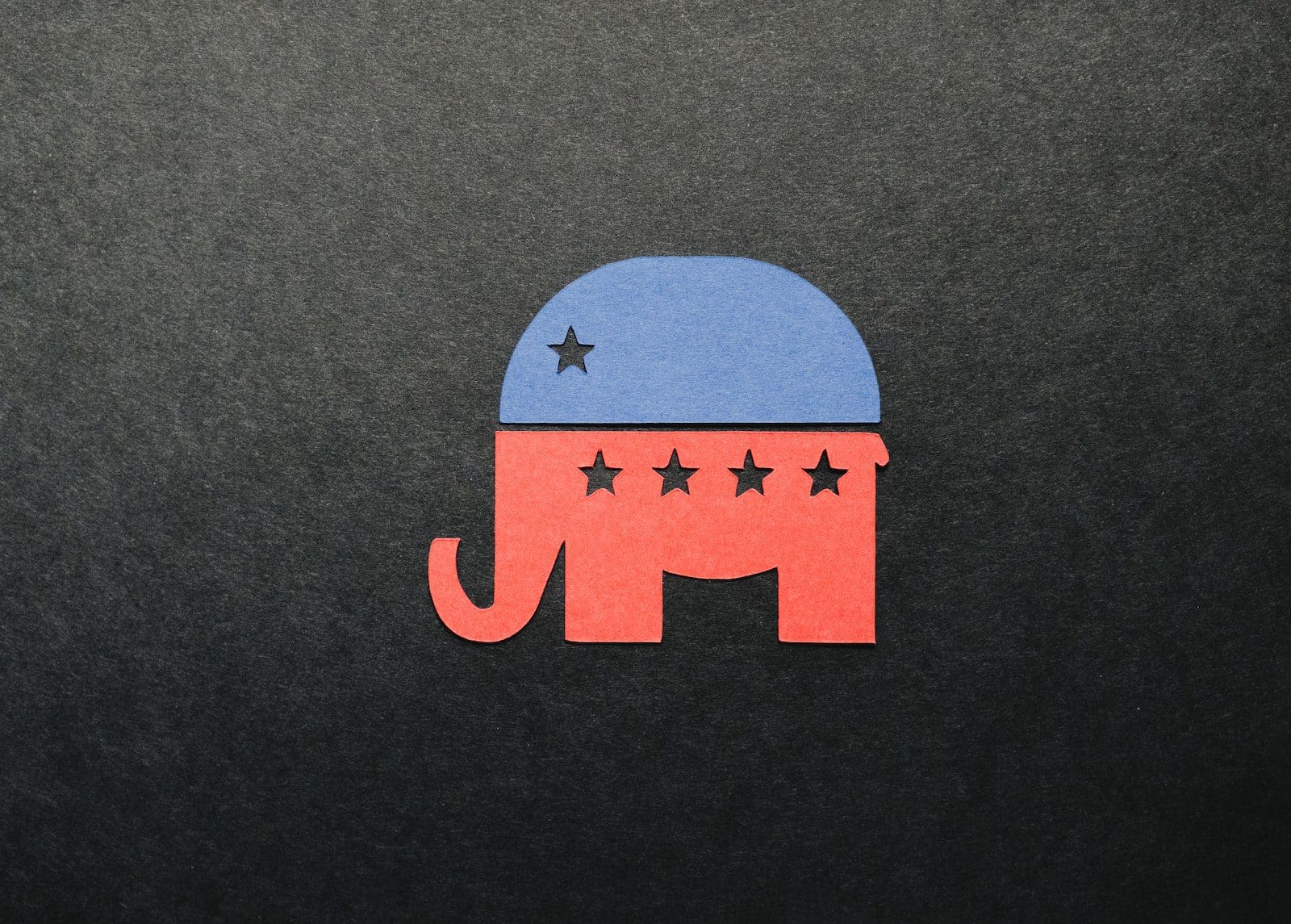The Republican Party and the Democratic Party are the two major contemporary political parties in the United States. Democratic Party is the US’s oldest active political party.
Republican Party is referred to as an advocate of a republic. The members of the Democratic Party are Democrats, and members of the Republican Party are Republicans.
In major democracies, two umbrella political parties are loosely called the Conservatives and Liberals. In the US, Republicans can be termed as the conservatives and the Democrats as the liberals.
Key Takeaways
- Democrats tend to support progressive policies, emphasizing social justice, environmental protection, and government involvement in social programs; Republicans advocate for conservative policies, emphasizing limited government, individual liberties, and free-market principles.
- Democrats favor higher taxes on wealthier individuals and corporations to fund public services; Republicans prefer lower taxes and deregulation to stimulate economic growth.
- Democrats support more lenient immigration policies and pathways to citizenship; Republicans advocate for stricter border control and immigration enforcement.
Democrat vs Republican
The difference between the Republicans and the Democrats is that religious and nationalist groups primarily shape Republicans, while liberals and Marxists shape Democrats.

Comparison Table
| Parameters of Comparison | Democrats | Republicans |
|---|---|---|
| Who are they | Members of the Democratic party | Members of the Republic party |
| Philosophy | Aligned towards liberal philosophy, also called left-leaning. | Republican follow conservative and right-leaning ideologies. |
| Color Represented | Blue | Red |
| Symbol | Donkey | Elephant |
| Economic Ideas | Democrats believe higher tax rates can be imposed on people with higher incomes. And increasing the taxes will fund government programs. | Republicans do not favor increasing tax rates. Moreover, they disagree that higher-income people must pay more taxes. They prefer a flat tax. |
| Stance on Government Regulation | Government regulations are necessary to protect consumers. | Government regulations obstruct the free market and job growth. |
| Healthcare Policy | Democrats strongly believe that Governments can support and provide better Healthcare. | Republicans believe that the Government can’t run healthcare services as efficiently as Private companies. |
| Strong States | Some States where Democrats have strongholds are New York, Massachusetts, and California. | Some of the states where Republicans have strong voices are – Texas, Kansas, and Oklahoma |
| Famous Presidents | Franklin Roosevelt (FDR), Bill Clinton, Woodrow Wilson, Jimmy Carter, John F. Kennedy, Barack Obama | Abraham Lincoln, Ronald Reagan, Teddy Roosevelt, George Bush, Richard Nixon |
| Preceded by | Democratic-Republican Party | Free Soil Party and Whig Party. |
What is Democrat?
The Democrats support democracy and seek to deepen democracy as a government process. They promote human rights as a fundamental part of American institutions.
The Democratic Party began around America’s independence from British rule in 1792. Andrew Jackson was the first Democratic President.
Democrats support a tax system that places a greater burden on the rich and large corporations and prefer spending on social programs rather than defense. Democrats support the civil rights of minorities and believe in creating a safety net for individuals, backing various social welfare programs, including healthcare.
To fund these programs and other initiatives, Democrats increase the tax. Democrats also support environmental protection programs, gun control, less-strict immigration laws, and worker rights. The democrats go by their symbol, Donkey. John F. Kennedy, Bill Clinton, and Barack Obama are some famous Democrat Presidents.

What is Republican?
Republicans, just as the name suggests, support the government as a republic. The Republican Party was founded in 1854.
The Republican Party elected Abraham Lincoln as the first Republican president. The party was known as GOP, widely understood as the “Grand Old Party,” in the 1870s.
Initially created to support a free market economy that countered the Democratic Party’s agrarian leanings and support of slave labor, the Republicans have been associated with reducing taxes to stimulate the economy, deregulation, and conservative social values.
The Republican party’s mascot is the elephant. Abraham Lincoln, Teddy Roosevelt, and George Bush are famous Republican Presidents.

Main Differences Between Democrats and Republicans
- Democrats give greater importance to equality and social/community responsibility. In contrast, Republican philosophy leans more towards individual freedoms, rights, and responsibilities.
- Democrats favor stricter gun control laws, opposing the right to carry concealed weapons in public places. Republicans oppose gun control laws and strongly support the right to bear arms and carry concealed weapons.
- Regarding Military matters, Democrats do not prefer to increase spending on Defence. In contrast, Republicans prefer to increase the spending on Defence and have a more hardline stance against countries like Iran.
- Democrats support abortion rights. Republicans believe that abortion should not be legal.
- Democrats strongly believe that Governments can support and provide Universal Healthcare, whereas Republicans believe that the Government can’t run the healthcare services as efficiently as Private companies.
- Democrats favor equal rights for gay and lesbian couples, such as the right to marry and adopt children. Republicans believe marriages can happen only between a man and a woman, hence are against LGBTQ.
- Democrats favor friendlier immigration policies, whereas Republicans favor stringent immigration policies.
- Democrats believe in the idea of minimum wages. Republicans think that wages need to be fixed by the free market.
- Democrats favor environmental regulations and anti-discrimination laws for workers. Republicans consider these regulations harmful to business and job growth as most laws have unintentional consequences.
- Red is associated with the Republicans (as in Red states – the states where the Republican presidential nominee wins), and Blue is associated with the Democrats.
- The Democratic Party is now strongest in the Northeast (Mid-Atlantic and New England), Great Lakes Region, the Pacific Coast (especially Coastal California), including Hawaii. Since 1980 the Republicans have been strongest in the South and West, including Oklahoma, Kansas, and Nebraska.




